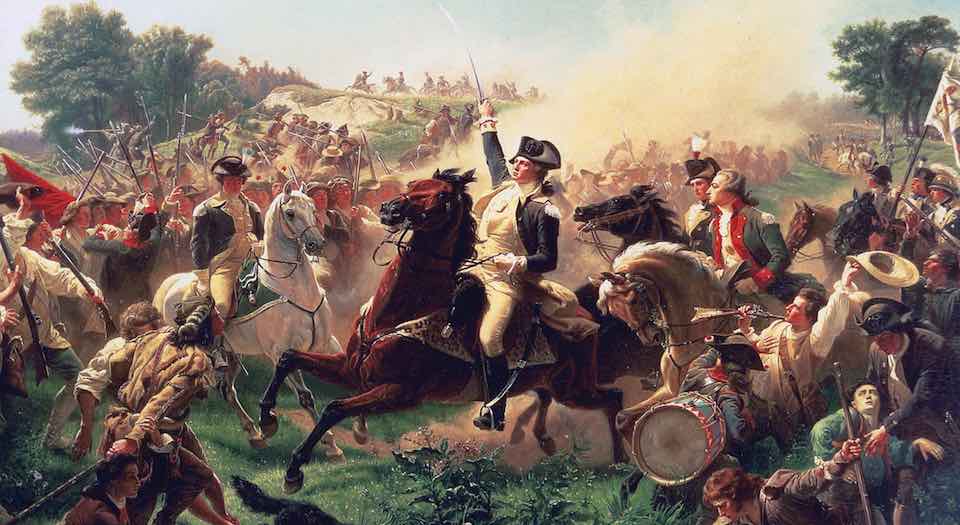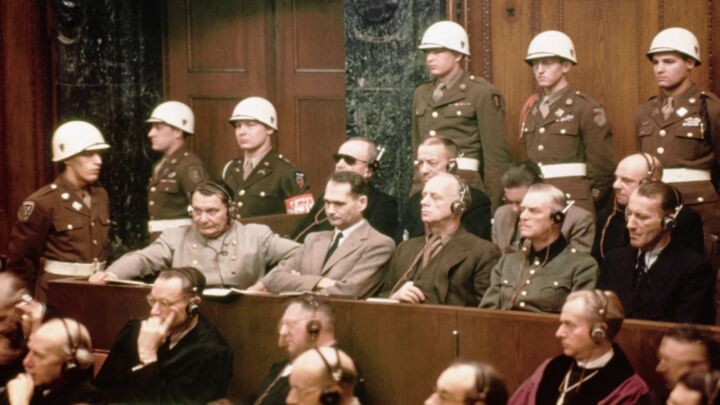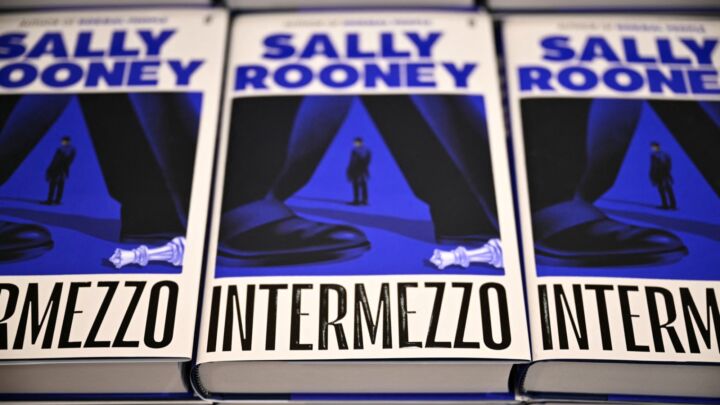
Long-read
The cause of mankind
The American Revolution changed the world, and it isn’t finished yet.
Want unlimited, ad-free access? Become a spiked supporter.
Late in their lives, John Adams and Thomas Jefferson, American revolutionaries and early presidents, renewed a friendship that had been damaged by political fighting, and embarked on a remarkable correspondence that lasted many years. In one letter to Jefferson in 1815, Adams expressed his fears that the American Revolution was not being followed by similar advances in Europe, and that, instead, a reactionary counter-movement had begun: ‘Is the 19th century to be a contrast to the 18th? Is it to extinguish all the lights of its predecessor?’
Indeed, following the demise of Napoleon, Europe seemed to be returning to its past: monarchy, aristocratic dominance, ecclesiastical authority and colonialism were all evident. In response, Jefferson acknowledged the dangers raised by Adams, but adopted a more optimistic tone about the future: ‘That same light from our West seems to have spread and illuminated the very engines employed to extinguish it. It has given [Europeans] a glimmering of their rights and their power. The idea of representative government has taken root and growth among them… Even France will yet attain representative government.’
This exchange between these two Founding Fathers is telling. It reminds us that Adams and Jefferson were men of the Enlightenment. Their references to ‘lights’ and ‘illumination’, so often used as metaphors for their Age, signified not just enlightened, more democratic political forms, but also new attitudes and institutions, encompassing science, the arts and social advancement generally. The Adams-Jefferson conversation also shows that, despite their political differences, they were united against the emerging Counter-Enlightenment. And their letters reveal how these two giants of the era saw the American Revolution not in isolation, but in a global context. Their hopes and ambitions were for humanity, not just their own country, and they knew that the fate of their revolution was bound up with others’ attempts similarly to move forward.
Despite the Adams-Jefferson correspondence and other evidence of the Enlightenment’s influence on the American founders, most historians have tended to downplay how the American Revolution was shaped by the Enlightenment; an exception is Henry May’s The Enlightenment in America (1976). Critics of the Enlightenment – in particular, American conservatives – have long argued that the American Revolution was not informed by the pursuit of a philosophy of ‘natural and inalienable rights’, by the elevation of the ‘rights of man’ over historical communities, or by any other ‘ideological’ agenda. Rather, according to this view, the revolution was a pragmatic secession with limited aims, an accident that a more skilful leader than George III could have avoided.
Similarly, historians have often neglected the impact of the American Revolution on the rest of the world. Again, there are exceptions, most notably RR Palmer’s The Age of Democratic Revolution, which advanced the concept of an ‘Atlantic Revolution’, but few have continued on Palmer’s path since his book was published in 1959. Instead, the literature has tended to focus on examining the American Revolution as primarily a domestic drama, an event that remained relatively isolated and was not replicated in Europe. Hence, the idea of ‘American exceptionalism’ became relied on as a foundational assumption.
In his new book, Jonathan Israel puts forward an interpretation of the American Revolution that is at odds with much of the prevailing wisdom, yet more supportive of Adams’ and Jefferson’s Enlightenment-infused outlook. The Expanding Blaze: How the American Revolution Ignited the World, 1775-1848 is an intellectual history that situates the American Revolution at the centre of a transatlantic movement to realise the dreams of the Enlightenment philosophers in the reality of politics and society. In Israel’s sweeping and often exhilarating account, one that takes in revolutions from France and Haiti to Ireland and Greece, we discover the continual cross-fertilisation of radical ideas: American revolutionaries inspired by Europeans and others, who in turn were inspired by, and learned from, their American brethren.
Moderates vs radical democrats
In Israel’s eyes, it is hard to overstate the momentous, world-historical import of the American Revolution. It ‘commenced the demolition’ of a world of ‘kings, aristocracy, serfdom, slavery, and mercantilist colonial empires’. More than simply the overthrow of an external colonial power, the revolution’s ‘political and institutional innovations grounded a wholly new kind of republic embodying a diametrically opposed social vision built on shared liberty and equal civil rights’. The American Revolution ushered the world towards modernity – becoming, in Israel’s words, ‘the crucible of democratic modernity’ – by ‘offering a new kind of polity starkly contrasting with the ancien regime monarchical-aristocratic political and social system dominating Europe, Latin America, Africa and Asia’ as well as ‘the vast, exploitative colonial empires that… overshadowed the globe’.
The Expanding Blaze is a natural next step for Israel, given his work to date. Professor emeritus at the Institute for Advanced Study at Princeton, Israel is a leading historian of early modern Europe and author of a weighty (in terms of both the number of pages – some 3,000 in total – and intellectual heft) trilogy on the Enlightenment: Radical Enlightenment, Enlightenment Contested and Democratic Enlightenment. This background makes him attuned to the influence of the Enlightenment in the American setting.
Israel’s distinctive take is his identification of two Enlightenments: a mainstream Enlightenment consisting of Kant, Locke, Hume and Voltaire, and a more radical Enlightenment made up of writers such as d’Holbach, Diderot, Condorcet and, most importantly, Spinoza. In his view, the mainstream Enlightenment sought to limit the scope of reason, blending it with faith and tradition. In contrast, the radical Enlightenment pursued a principled reason-based approach, questioning existing arrangements and seeking radical change. In an interview with Kenan Malik, Israel explained why the radical Enlightenment thinkers were more likely to push the notions of equality and democracy to their extremes: ‘If you are going to construct a moral order in the modern world what other basis do you have? If it is not the voluntaristic preferences of some divinity to be interpreted for us, then the only way we are going to come to agreement is if we agree to consider our interests as equal.’
In The Expanding Blaze, Israel develops this mainstream-radical opposition further, finding it to be a critical divide among republicans in America and elsewhere. On one side were the ‘moderate’ or ‘aristocratic’ republicans, which included Adams, Alexander Hamilton, John Jay and, to some extent, George Washington. This group looked to Locke and Montesquieu for guidance, and admired the ‘mixed government’ doctrine from England. They championed property rights and limited democracy by restricting suffrage and other means.
On the other side were the ‘radical’ or ‘democratic’ republicans, such as Jefferson, Benjamin Franklin and Thomas Paine. These revolutionaries drew ideas from a different set, writers such as d’Holbach and Condorcet, who were arguing against slavery in terms of universal human rights. In particular, they were influenced by Histoire Philosophique des Deux Indes, a six-volume history of trade between Europe and the Far East written by various French authors, including Diderot and Raynal, which marked the beginning of the anti-colonial movement.
The political struggle between the moderates and radicals helps Israel explain the dynamics of pre- and post-revolutionary America – why at one moment the founders appear to embrace universal rights (endorsing ‘all men are created equal’, as the Declaration of Independence states) and the next they do not (when they refuse to abolish slavery).
Before the revolution, the publication of Paine’s Common Sense in January 1776 was an intervention that gave the radicals a temporary upper hand. The most widely read and discussed of all of the pamphlets produced in the period, Common Sense ‘summoned Americans to fight for independence, more equality and new constitutional principles’. Paine’s innovation is to make his appeal in the language of universal rights and values; as he states, ‘the cause of America is in great measure the cause of all mankind’. The invention of human rights in the 1770s represents a sudden shift, Israel argues. It is not a notion inherited from Locke, but one that can be found among like-minded contemporaries in France (such as Diderot) and Britain (such as Joseph Priestly). Common Sense decisively tilted the country towards separation from Britain, and paved the way for Jefferson’s universalist Declaration of Independence.
This split between the two tendencies led to differing views of how to proceed in post-1783 America. Essentially, moderates considered the revolution complete, while radicals felt much more needed to be done. ‘The revolution’s deficiencies, held the radicals, lay partly in “defects” in state constitutions, partly in the revival of religious authority, and partly in failing to abolish slavery and emancipate the blacks’, writes Israel. US state constitutions drastically restricted the right to vote even for white males, and left an informal ‘aristocracy’ in control, the radicals argued.
The moderates’ dominance was highlighted by the 1787 US Constitution, which followed a separation of powers approach that arguably watered down popular sovereignty, by creating upper and lower houses, a new executive (the presidency) elected via an Electoral College, and a Supreme Court. (It could have been worse: as Israel notes, Hamilton – the founder celebrated today by a Broadway hip-hop production – suggested that ‘the executive officer and perhaps the Senate members should be chosen for life in order to minimise the democratic tendency’.) Only at the insistence of the radical republican Jefferson was the Bill of Rights – which could be seen as enshrining the values of the Declaration of Independence in law – added to the Constitution.
The American and French revolutions
Of all of the global hotspots that emerged in the wake of the American Revolution, France was most critical for the future of the Enlightenment project. Unlike many historians, Israel sees both the American and French revolutions as children of the Enlightenment. Clearly, there were many personal interconnections between the two countries, and the logic of universal human rights meant radical protagonists viewed such rights as globally applicable.
Jefferson was in France from 1784 to 1793, and ‘figured as almost a direct participant’ in the French Revolution. In particular, he assisted Lafayette in drafting the 1789 Declaration of the Rights of Man and of the Citizen, which was modelled on the Declaration of Independence. Paine, too, played a very active role in the French Revolution, living in the country for most of the 1790s. In The Rights of Man (1791) he defended the Revolution, and in 1792 he was elected to the National Convention.
Likewise, the French radicals looked to American exemplars, and viewed their revolution as building on the American one. In his Influence of the American Revolution on Europe, in 1786, Condorcet outlined the ways the American Revolution had roused the intelligentsia in France. Just as ‘the American Revolution gave birth to ours’, said the Girondist Jean-Pierre Brissot in 1789, ‘ours will without doubt revolutionise the whole of Europe’. And, once in power, the democratic republicans sought to emulate the Americans’ achievements. In the four years from the fall of the Bastille in July 1789 to the domination of the Montagne faction in 1793, ‘a combination of philosophique leadership and artisan support promoted republicanism, press freedom, democracy, human rights, Americaniste individual liberty, and general emancipation’.
Israel views the rise of Robespierre and the Montagne faction, and its subsequent repression and Reign of Terror, as the end of the democratic republican revolution in France. It was not the culmination of the revolution, but its reversal: ‘The French populist authoritarianism generated by Marat and Robespierre was not in any way an offshoot of the democratic republican revolution of 1789-93 but an entirely separate and fiercely antagonistic social, cultural, and political trend.’ The new leaders did not admire the American Revolution or its values: ‘At this point all parallelism ceased.’ Jefferson, Paine and other radical democrats condemned Robespierre and the Montagne.
Israel knows he is challenging the scholarly consensus, which views the American and French revolutions as fundamentally different. He says Hannah Arendt, ‘among the twentieth century’s greatest philosophers’, shared in this misapprehension. In her book On Revolution (1963), Arendt wrote: ‘That neither the spirit of the [American] Revolution nor the thoughtful and erudite political theories of the Founding Fathers had much noticeable impact upon the European continent is a fact beyond dispute.’ In this, Israel says, Arendt ‘could not be more mistaken’. Universal and equal rights were central to both revolutions, just as both upheavals saw proponents of moderate Enlightenment ideas, such as limited tolerance and suffrage under monarchical-aristocratic direction. ‘The contrast Arendt drew between a French Revolution fundamentally flawed – for her the starting point of the road that led to the Bolshevik Revolution – and a “republican” American Revolution she described sympathetically – is left entirely erased once the Terror, debased Rousseauisme, and Robespierriste populist streak is properly characterised and separated from the French Revolution’s republican democratising principles.’
Diminished but not extinguished
Israel finds the transatlantic struggle between moderates and radicals continuing beyond the French Revolution, with Enlightenment ideas animating the revolutions of 1830 and 1848 in Europe, among other insurgencies. He argues that the reverberations kicked off by the American Revolution were directly felt for three-quarters of a century, much longer than the impact of the English revolutions of 1640-1666 and 1688. The longevity and spread of the 1775-1848 era can also be put down to the Enlightenment itself, which created an atmosphere that encouraged openness to change and experimentation.
In America itself, following the revolution, the moderates proved much stronger, among both the elites and the masses, than did the radical democrats. In particular, the radical tendency was undermined by a revival of religious sentiment – the ‘Second Great Awakening’ Evangelical movement beginning in 1790 – and by accusations of promoting irreligion and un-American Jacobinism. Later, intolerant populist movements would put radical democrats on the defensive, culminating in the Know-Nothing movement and anti-immigrant attitudes of the 1850s. By that time, the US was on a different path than Europe’s, and ceased to be a universal model.
Israel’s impressive study is a tour de force. He reminds us what an enormous step forward the American Revolution was, for the country itself, the world and the cause of emancipation. That the Revolution fell short of the radical democrats’ hopes does not detract from the fact that it was a decisive break from the past, and signalled the beginning of the end for monarchy, the aristocracy and the church as sources of authority and power. We often take for granted the principles of government the revolution entrenched: inalienable and universal rights, popular sovereignty, government by consent, separation of church and state.
Yes, as Israel notes, the glaring weakness of the revolution was that it began by declaring ‘all men are created equal’, yet ended up with a Constitution in 1787 that accepted slavery, and ensured its existence for decades to follow. Jefferson and other slave-owning founders were hypocrites for espousing universal human rights and not seeing through the emancipation of black people. But, at the same time, in establishing universal principles, the revolutionaries planted the seed of slavery’s destruction: it was the promise embodied in the revolution that created the foundation for the abolitionist movement’s success.
In an amazing coincidence, Adams and Jefferson died on the same day, 4 July 1826, which was the fiftieth anniversary of the Declaration of Independence. It is said that Adams’ last words were: ‘Thomas Jefferson survives.’ Adams was right: Jefferson does survive, in the universal values he and his fellow radical revolutionaries established, values which would inspire future leaders.
In his 1863 Gettysburg Address, Lincoln leaned on Jefferson’s Declaration of Independence, saying the nation’s founders were ‘dedicated to the proposition that all men are created equal’. In doing so, he redefined the Civil War as a struggle not only for the Union, but for human equality.
And addressing the March on Washington in 1963, Martin Luther King also drew on Jefferson’s words: ‘When the architects of our republic wrote the magnificent words of the Constitution and the Declaration of Independence, they were signing a promissory note to which every American was to fall heir. This note was a promise that all men, yes, black men as well as white men, would be guaranteed the unalienable rights of life, liberty, and the pursuit of happiness.’ He went on: ‘I have a dream that one day this nation will rise up and live out the true meaning of its creed: “We hold these truths to be self-evident: that all men are created equal.”’
Without Jefferson, there is no Lincoln, and no MLK. Each generation builds on the previous. The Enlightenment ideas that animated the American Revolution – self-determination, democracy, equality – are ideas that will not disappear until they are fully realised. As Jefferson wrote in one of his last letters to Adams: all ‘have not yet received [the Enlightenment’s] rays; but it continues to spread’ and ‘can no more recede than the sun return on his course’.
Sean Collins is a writer based in New York. Visit his blog, The American Situation
The Expanding Blaze: How the American Revolution Ignited the World, 1775-1848, by Jonathan Israel, is published by Princeton University Press. (Buy this book from Amazon(UK).)
You’ve read 3 free articles this month.
Support spiked and get unlimited access.
Help us hit our 1% target
spiked is funded by readers like you. It’s your generosity that keeps us fearless and independent.
Only 0.1% of our regular readers currently support spiked. If just 1% gave, we could grow our team – and step up the fight for free speech and democracy right when it matters most.
Join today from £5/month (£50/year) and get unlimited, ad-free access, bonus content, exclusive events and more – all while helping to keep spiked saying the unsayable.
Monthly support makes the biggest difference. Thank you.






Comments
Want to join the conversation?
Only spiked supporters and patrons, who donate regularly to us, can comment on our articles.